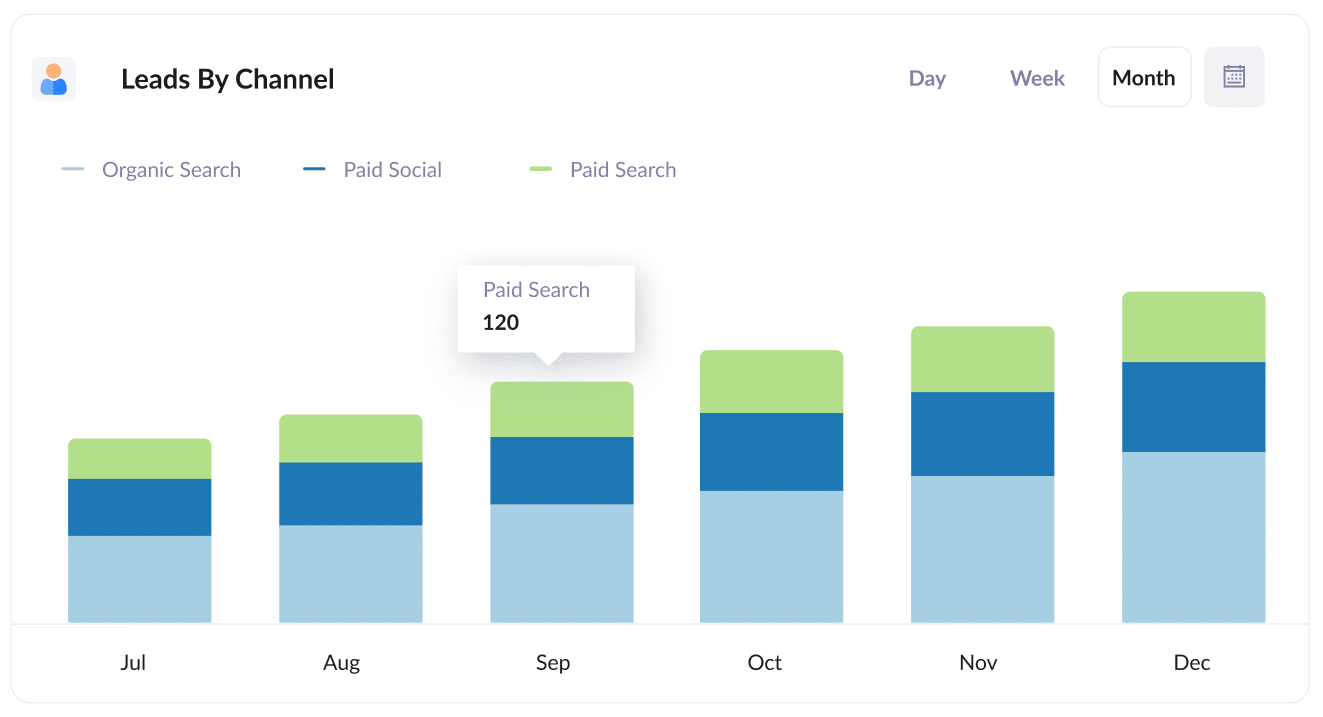How to track the source of your leads in WordPress forms
Learn how to properly track the source of your leads in Worddpress forms so you can see which of your marketing initiatives (I.e. SEO, Google Ads, Facebook Ads, etc) are actually working

Have you been looking for a way to track where your leads are coming from?
Imagine how good it would be if you could look at a lead and say 'This lead came from Organic Search' or 'This lead came from our Facebook Ads'
Fortunately, there’s a way to do this.
In this article, we’ll show you how to use a tool called Attributer to properly track the source of your leads when someone submits one of your WordPress forms.
4 steps for properly tracking the source of leads in WordPress forms
Follow these 4 simple steps to capture the source of your leads in WordPress forms:
1. Install Attributer and add hidden fields

Attributer is a small bit of code you add to your website.
When someone arrives on your site, it determines where they came from, saves the data in a cookie, and then passes it through each time someone submits a form.
To install Attributer on your website, sign up for a 14-day free trial here and then follow these instructions to add it to your WordPress site.
Once you've installed the Attributer code, the next step is to add a series of hidden fields to your website forms. Those hidden fields are:
- Channel
- Channel Drilldown 1
- Channel Drilldown 2
- Channel Drilldown 3
- Channel Drilldown 4
Most WordPress form-building tools make it easy to add hidden fields (including Gravity Forms, WPForms, Contact Form 7, Formidable Forms, etc) and step-by-step instructions (with screenshots) can be seen here.
2. Attributer writes lead source data into the hidden fields

When a visitor completes one of the forms on your website, Attributer will write information on where they came from into the hidden fields.
So if someone came from an organic Google search, it would write 'Organic Search' and the name of the search engine they came from (I.e. Google).
Or if someone came from one of your Google Ads, it would write 'Paid Search' as well as the name of the campaign, ad, keyword, etc.
3. Lead source data is captured by your form builder

When a visitor submits the form on your website, the lead source data that Attributer wrote into the hidden fields is captured by your form builder alongside the information the lead entered into the form (like their name, email, phone, etc).
4. Send it to your CRM & other tools

With the data captured in your form tool, there are a number of things you can do with it:
- See it in your WordPress Admin area - You can view this data in the Entries/Submissions table in your form tool (I.e. Gravity Forms, WPForms, etc)
- Include it in notification emails - You can include this information in the notification emails that your form tool sends, meaning you'll be able to see where each lead came from right from your inbox.
- Send it to your CRM - If you use a CRM (like Salesforce, Hubspot, Pipedrive, etc) then you can use your form tools native integrations (or third-party tools like Zapier) to send the data there and then build reports & dashboards on top of the data.
- Send it to a spreadsheet - You can use various add-ons or third-party tools (like Zapier) to send the data to a spreadsheet and then use that to run reports.
What data gets captured in WordPress forms?
With Attributer, the following lead source data gets captured by your form builder and can be sent to your CRM and other tools:
1. Marketing Channel Data
Attributer automatically captures what channel your leads come from (I.e. Paid Search, Paid Social, Organic Search) as well as further detail on each channel (I.e. For Paid Search, it also captures the Campaign, Ad Group, Keyword, etc).
So, for example, if you got a lead from your Google Ads then the following data would be captured (depending on the UTM parameters used behind the ad):
- Channel = Paid Search
- Channel Drilldown 1 = Google
- Channel Drilldown 2 = Brand Campaign
- Channel Drilldown 3 = Free quote ad
Alternatively, if a lead came to your site from an organic Google Search it might write:
- Channel = Organic Search
- Channel Drilldown 1 = Google
- Channel Drilldown 2 = www.google.com (or whatever Google domain they came from)
- Channel Drilldown 3 = Attributer (Or whatever keyword they used to find your site, where available)
2. Landing Page Data
Attributer automatically captures the first page the lead sees on your site (I.e. attributer.io/blog/track-lead-source-wordpress) as well as the category of the page (I.e. Blog).
This makes it easy to see how many leads you get from sections of your website (I.e. your blog) as a whole, as well as drill down and see how many leads you get from each individual blog post.
3 example reports you can run when you properly track the source of your leads with Attributer
If you are using Attributer to capture the source of your leads in WordPress forms, and you then send that information to your CRM or a reporting tool, then you'll be able to run a ton of different reports to see which of your marketing initiatives are actually working.
As someone who has run hundreds of these reports over a 15-year career running marketing & analytics teams, here are a few of my favourites:
1. Leads by channel

This report shows you how many leads you are getting each month by channel (I.e. Organic Search, Paid Search, Paid Social, etc).
It can help you understand at a high-level what's working and what isn't, and ultimately where you should be focusing your time and budget to grow.
For instance, if Organic Search is responsible for the majority of your leads but you're spending most of your budget on paid ads, you may need to rethink your budget.
2. Customers by Google Ads campaign

If you're running a variety of different campaigns in Google Ads to promote your business, then this chart will be useful.
It shows how many customers you've generated each month, broken down by the Google Ads campaign the lead came from.
It can help you understand which campaigns are actually generating customers for your business (as opposed to those that are just generating clicks and website visits that don't ultimately convert).
3. Revenue by Facebook Ads Network

If you are running ads on Facebook, then it's likely those ads are appearing across the various networks Facebook owns (I..e Facebook, Instagram, Messenger, Whatsapp).
If that's the case, the above graph will be useful to you.
It shows how much revenue you have generated from your ads on each network, and when combined with data on how much you've spent (which can be easily accessed from Facebook Ads), then you're able to calculate the exact ROI of your ads on each network.
Wrap up
If you've been looking for a way to properly track where your leads & customers are coming from, then Attributer could be a great solution for you.
Every time someone submits a form on your website it passes through information on where they came from, and if you send this data into your CRM or a reporting tool, you can build reports & dashboards that show you which of your channels & campaigns are generating your leads and customers.
Best of all, it's free to get started and usually takes less than 20 minutes to set up, so start your free trial today.
Get Started For Free
Start your 14-day free trial of Attributer today!

About the Author
Aaron Beashel is the founder of Attributer and has over 15 years of experience in marketing & analytics. He is a recognized expert in the subject and has written articles for leading websites such as Hubspot, Zapier, Search Engine Journal, Buffer, Unbounce & more. Learn more about Aaron here.
